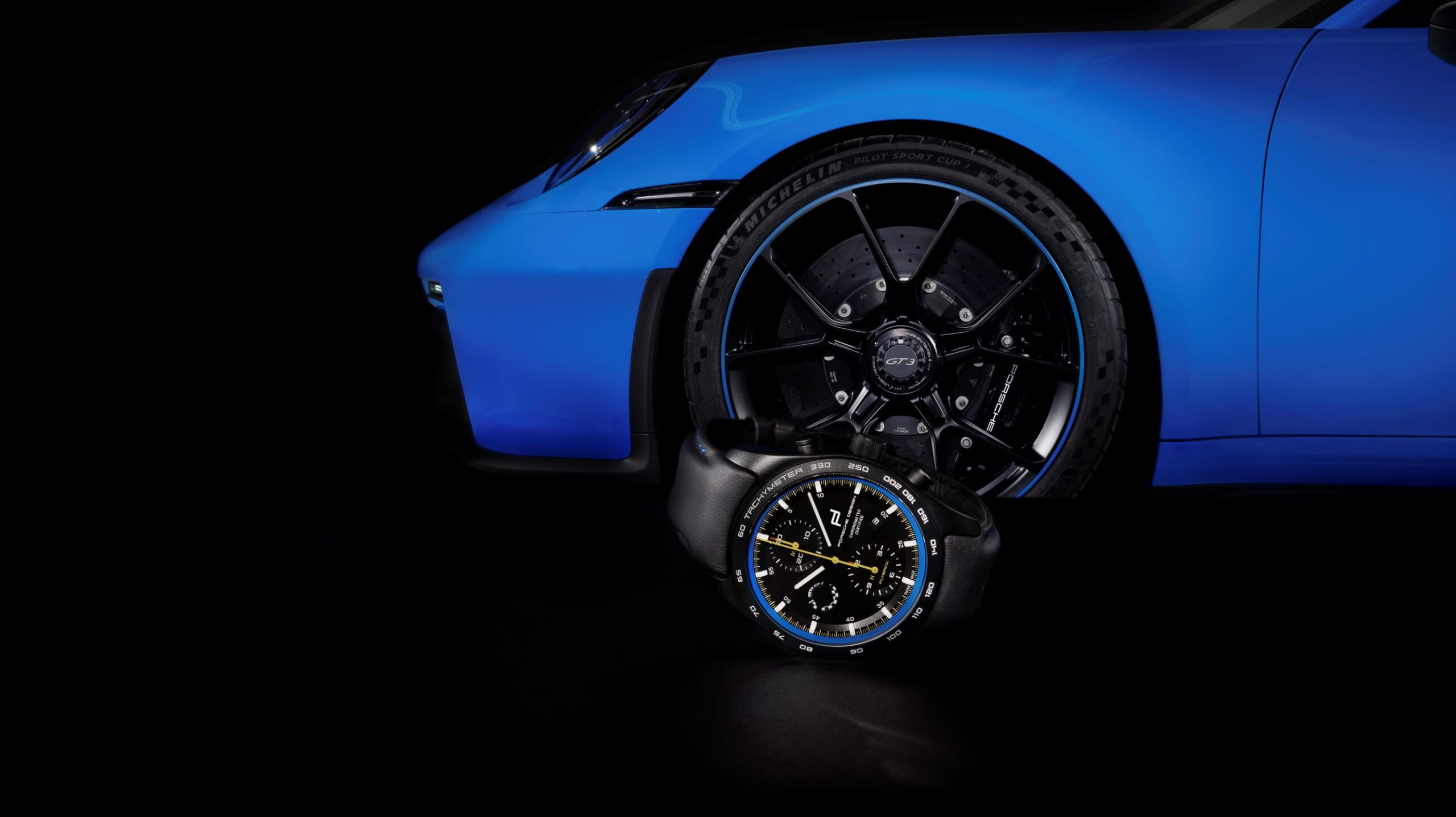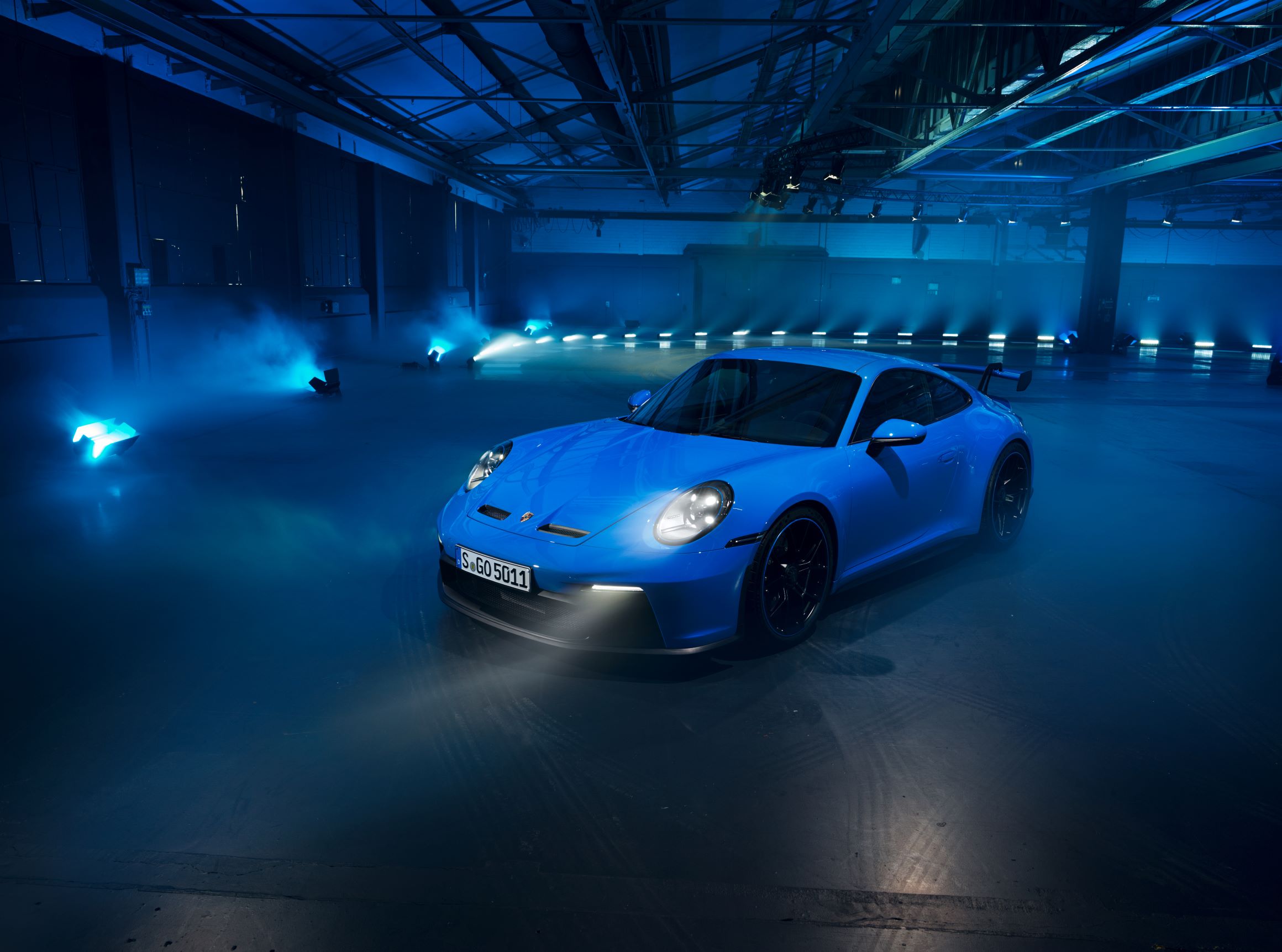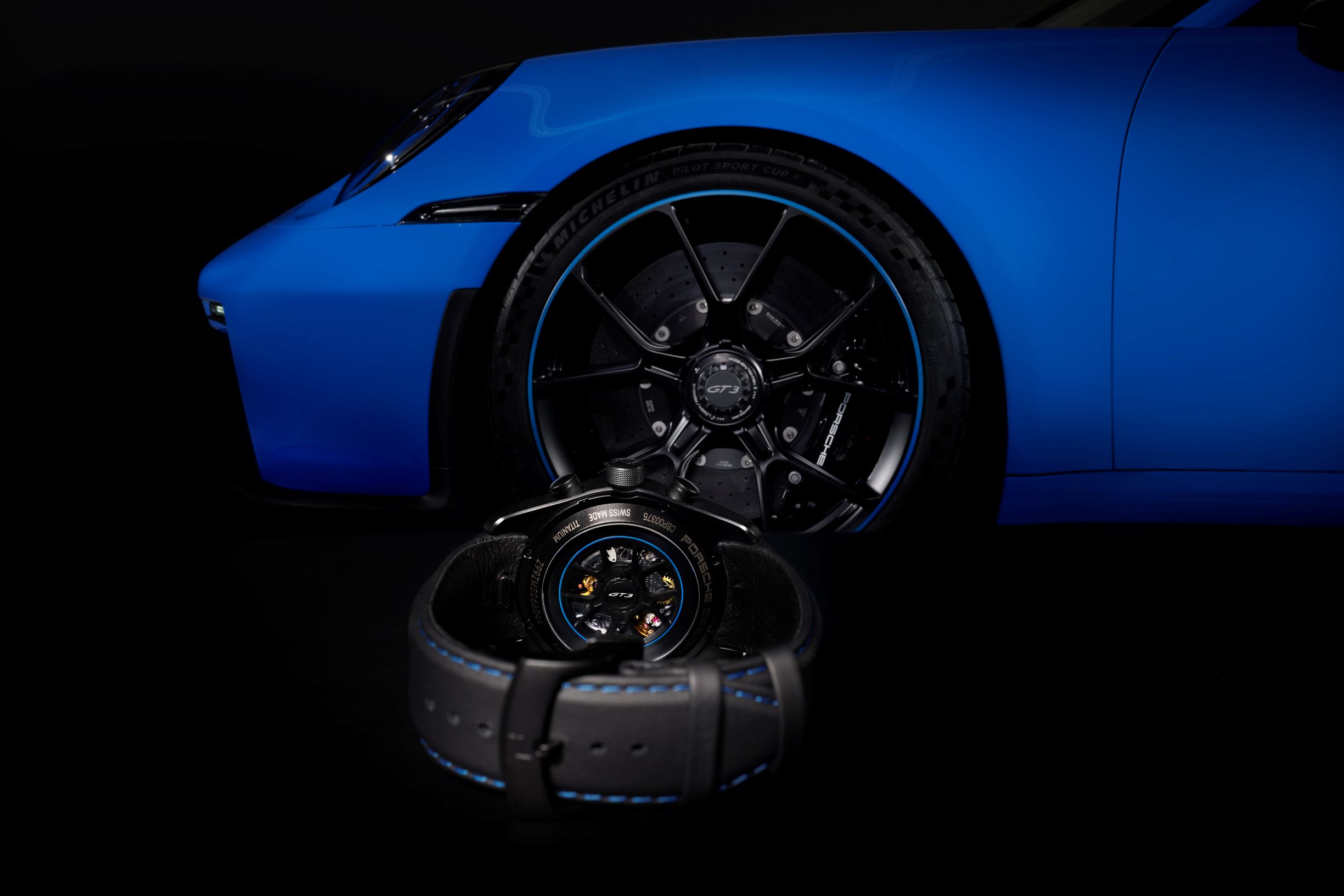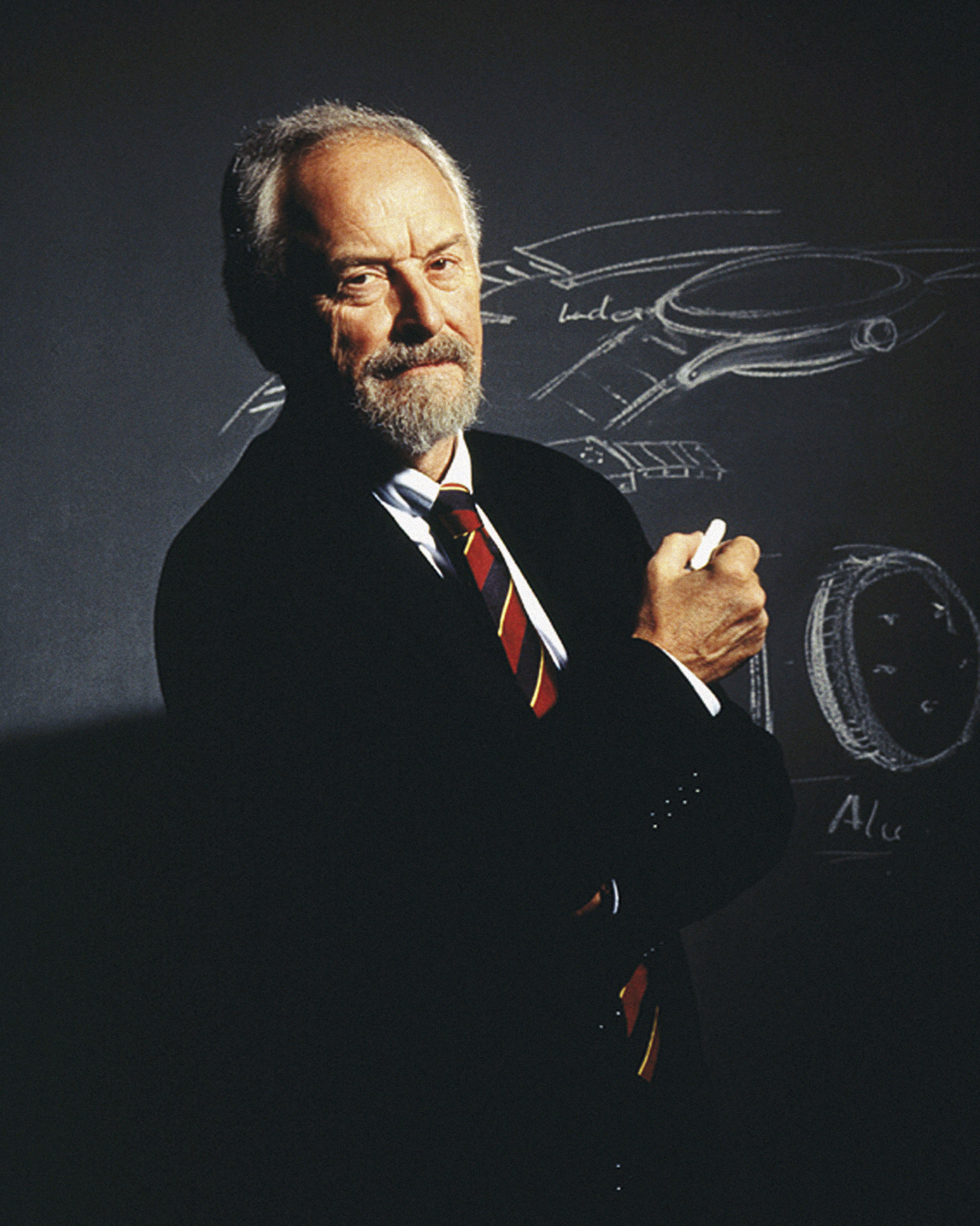The Porsche 911 GT3 Now Has a Sporty Chronograph Watch To Match
Porsche Design crafted an exclusive horological wonder inspired by the 911 GT3.

In 1972 Porsche Design was launched by Ferdinand Alexander “Butzi” Porsche, the man credited with penning what is arguably the most iconic automobile in history: the original 911. The design firm’s very first product was a timepiece, the Chronograph I—the first watch to use automotive-grade powder-coating for an all-matte black patina.
But F. A. didn’t demand matte black to forecast style trends, rather because he wanted to avoid glare when a track driver glanced down at his watch. For Butzi, and most of German design since the Bauhaus movement, form always follows function. Never the other way around.
It is from this modernist soil that Porsche Design evolved, as have its timepieces over the years. In 2017 the brand premiered what they dub the Porsche Design for Porsche (PD4P) program, wherein they align an exclusive watch to be made available only to buyers of a certain model. That first PD4P vehicle being the 911 Turbo S Exclusive Series.

Four years and six timepieces later, Porsche Design is unveiling yet another original: the Chronograph 911 GT3. Of course the GT3 isn’t just any Porsche; it is arguably Porsche’s flagship production offering, a raw 502-hp, naturally-aspirated rocket unsullied by turbos or electric motors, and one of the last true supercars still available with three pedals for the wicked at heart.
Although bristling with bleeding-edge racing tech, the GT3 is also renowned for its analog viscera—like the insistence on offering a manual despite Porsche’s superb automatic PDK’s quickness.
“For me a stick shift is a little bit like mechanical watches: you don’t need them to know how late it is, there’s many devices around you,” says Dr. Frank Steffen Walliser, Porsche Vice President, Model Lines 911 and 718, about his three pedal resolve.
https://www.instagram.com/p/CNm9VkQFZrN
“But I really prefer to have a manual because there’s a better interaction; you are more glued to the car, you feel more, you can control more, and that makes driving different. You’re not quicker, but not everything in life is about that.”
While the Porsche Design Chronograph 911 GT3 is the seventh PD4P watch, it is the first in the program to fold in the custom-built Timepieces program and offer unprecedented individualization. It is the first that allows the buyer to personalize his watch to match his gleaming new ride—all prior watches came preconfigured in just a few different versions based on the car.

Utilizing an online configurator similar to the one used to bespoke a GT3, eight characteristics can be customized in all—two cases, three hands, four bezels, 15 colored rings on the dial, 900 strap combinations (leather and stitching), six winding rotors, two titanium bracelets (black or silver), and custom engraving.
https://www.instagram.com/p/COARxeyNSV7
For Dr. Walliser—the man charged with not only developing the latest generation GT3, but also the $2 million 918 Spyder hypercar and 911 RSR Le Mans racecar—and countless petrolheads out there, the bond between automobile and timepiece is inextricable.

And while many automakers have collaborated on wristwatches, none can boast their own movement like Porsche Design does with its COSC-certified caliber WERK 01.200. Competitors do not make their own watches, nor develop them so closely with the teams making the actual cars.
Just how closely the watch developed alongside its four-wheeled sibling is perhaps the biggest leap of the Porsche Design Chronograph 911 GT3. Rolf Bergmann, Managing Director of Porsche Design Timepieces AG, and the man responsible for the manufacturing of the watch, notes how the designers in Zell am See, Austria had monthly meetings with the designers of Porsche Style in Weissach. The timepiece’s production team met regularly with guys from the GT3’s department of colorization, wheels and rims, and special features.

“We show them what is possible, and they choose,” explains Bergmann, “so we have enough time to create the [watch characteristics] we want when the car is ready to launch.”
One major feature specifically requested by Dr. Walliser when they first met regarding PD4P watches was incorporating a flyback functionality; a year later Bergmann returned with one. “He was right, the flyback chronograph and the racetrack belong together. And that is very special that we can work together on that.”
This in-house symbiosis is really what elevates Porsche and its Porsche Design Timepieces from other OEM wristwatch collaborations. Watchmaking is ingrained in the brand’s DNA, and vice versa, from the celebrated mind that sprung both the 911 and the Porsche Design studio itself.

“Ferdinand Alexander Porsche was the first guy who detected that titanium was a perfect material for a watch case,” explains Bergmann, who began his career 23 years ago at Porsche AG, emphasizing yet another way in which these timeless machines share DNA.
“That is something very special that we came up with: transferring titanium from the piston rod to the watch head. And today every watch case of Porsche Design timepieces, with the small exception of some gold models, is titanium.”
If it’s possible for machines to have souls—if androids dream of electric sheep and all that—then it is fair to suggest the GT3 and its Chronograph just might share one.
“A watch movement is a very small, highly-technical piece which is driven by spring bars and gears,” Bergmann philosophizes. “And it is a very precise and special gearbox, just like you find in the GT3.”
